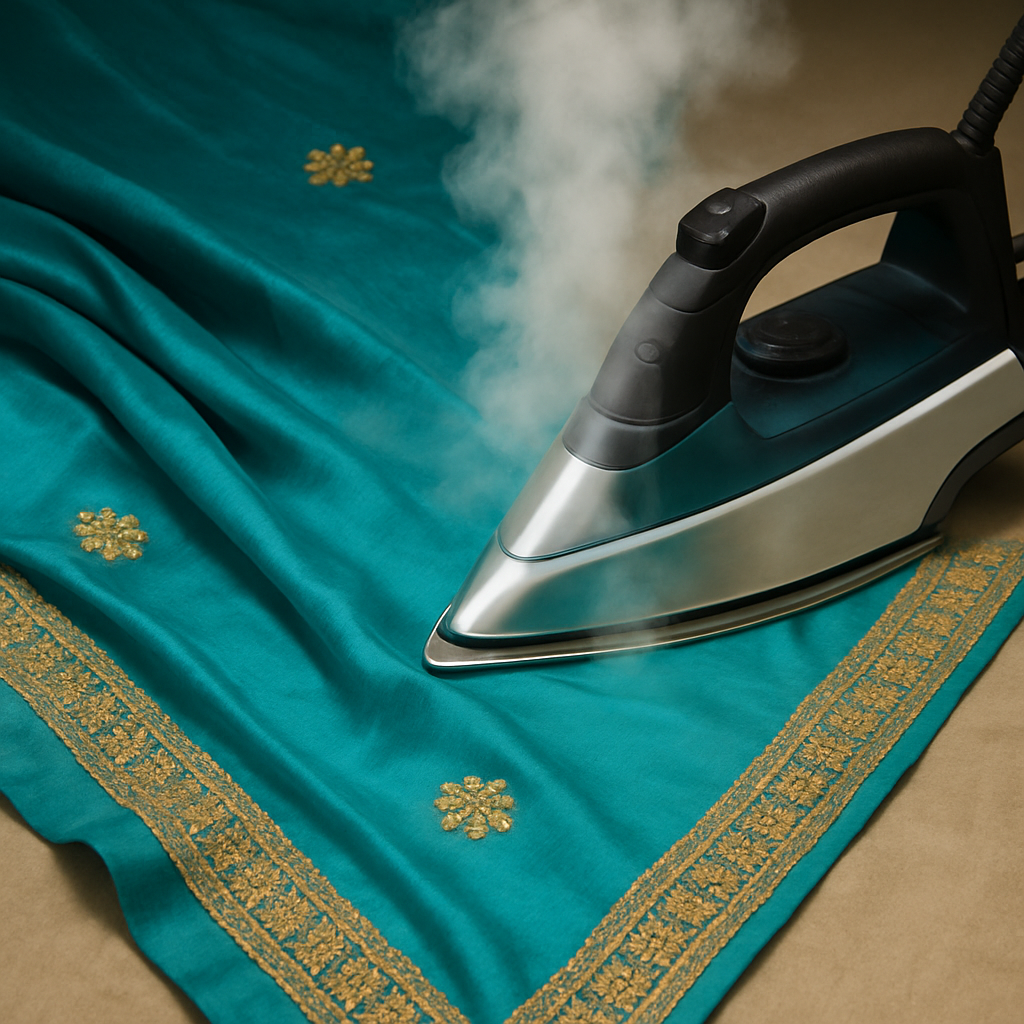 Sarees are beautiful, elegant, and full of tradition. Whether it’s silk, cotton, chiffon, or georgette, every saree deserves good care to maintain its charm. One of the best ways to remove wrinkles from a saree without damaging the fabric is by steaming it.
Sarees are beautiful, elegant, and full of tradition. Whether it’s silk, cotton, chiffon, or georgette, every saree deserves good care to maintain its charm. One of the best ways to remove wrinkles from a saree without damaging the fabric is by steaming it.
Steaming is a gentle and safe method to smoothen your saree, especially if you don’t want to risk burning it with a hot iron. In this article, we’ll explain how to steam a saree step by step, along with tips for different types of fabrics. check out more for wikepedia
Table of Contents
ToggleWhat Is Steaming?
Steaming is the process of using hot water vapor to relax the fibers of your clothes. A garment steamer releases steam that gently removes wrinkles without making direct contact with the fabric.
Unlike ironing, which involves pressing the cloth with heat, steaming is safer for delicate materials like silk, satin, or synthetic blends. welcome to finishingsaree to visit us.
Why Steam a Saree?
Here are a few reasons why steaming is a great option:
It’s gentle and reduces the risk of burning or damaging the fabric.
No shiny marks or pressure lines like ironing.
It works well on pleats, pallu, and embroidery areas.
Steaming can also freshen up a saree by removing odors.
Things You’ll Need
Before you begin, make sure you have:
A garment steamer – handheld or standing type.
A hanger – preferably a padded one.
Water – for the steamer (use distilled water if possible).
Clean space – with enough room to move around the saree.
Optional:
A cloth steamer pad or flat surface if you want to steam the saree lying flat.
Step-by-Step: How to Steam a Saree
Step 1: Hang the Saree Properly
First, unfold the saree and place it neatly on a hanger. Make sure it hangs straight without bunching up.
If your saree has embroidery or stones, be careful to hang it in a way that avoids strain on those parts.
Step 2: Fill the Steamer
Fill your steamer with clean water. If possible, use distilled water to prevent mineral buildup inside the machine. Plug it in and wait for the steam to start.
Most steamers take about 1–2 minutes to get ready.
Step 3: Start Steaming from Top to Bottom
Begin at the top edge of the saree. Hold the steamer a few inches away from the fabric (don’t press it too hard). Move the steamer slowly downwards in vertical strokes.
Let gravity help you. The weight of the fabric combined with the steam will relax wrinkles naturally.
Step 4: Focus on Wrinkled Areas
If you see tough wrinkles, hold the steamer a little closer, but do not touch the fabric directly, especially if it’s silk or net. You can also gently pull the fabric downward with one hand while steaming with the other.
Step 5: Steam Pleats and Pallu Carefully
For pleats, spread them one by one and steam gently. You can also pin them in place and steam over the top for a crisp look.
For the pallu, let it hang freely and run the steamer over it with slow motion. Be extra gentle if the pallu has embroidery or beads.
Step 6: Let the Saree Cool Down
Once you’ve steamed the entire saree, let it hang for a few minutes. This allows the fabric to dry completely and the wrinkles to settle.
Do not fold the saree immediately after steaming. Let it rest for 10–15 minutes.
Fabric-Specific Tips
Silk Sarees
Always use low steam settings.
Never touch the steamer head directly on the saree.
Steam on the reverse side if possible.
Cotton Sarees
Cotton handles steam well, so you can use a bit more pressure.
Steam while the saree is slightly damp for best results.
Chiffon/Georgette
These are light fabrics. Keep the steamer at a distance.
Avoid pulling too hard as they may stretch.
Synthetic/Blended Sarees
Check the fabric care label if available.
Always start with the lowest steam setting and test on a small area first.
Do’s and Don’ts of Steaming a Saree
Do’s:
Use clean water in your steamer.
Keep the steamer moving – don’t let it stay in one spot.
Hang saree on a strong, wide hanger.
Give time for fabric to cool before folding.
Don’ts:
Don’t touch the steamer nozzle directly to the saree.
Don’t steam over heavy embroidery or mirror work directly.
Don’t use tap water if your area has hard water.
Conclusion
Steaming a saree is an easy and effective way to keep it wrinkle-free, neat, and ready to wear. With a little care and patience, you can make your saree look fresh and flawless without the risk of damage from a hot iron.
Whether it’s a soft chiffon saree for a casual outing or a rich silk saree for a wedding, steaming helps preserve its beauty and structure. Once you get the hang of it, you’ll wonder how you ever managed without it.
So next time your saree needs a little touch-up, skip the iron and try steaming instead — your saree will thank you.